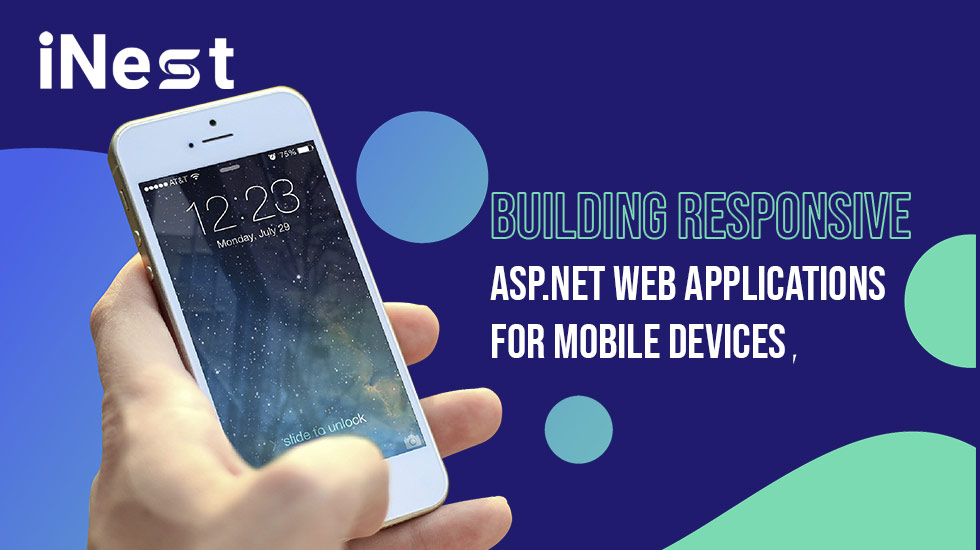In the ever-evolving landscape of web development, creating mobile-friendly and responsive ASP.NET web applications has become essential. As mobile devices resume to dominate internet usage, ensuring that your web applications provide a seamless experience across various screen sizes and devices is paramount. This ultimate guide will take you through the key principles and techniques for building responsive ASP.NET web applications that cater to the diverse needs of today’s users.
Understanding Responsive Design
Responsive design is the foundation of responsive web applications. It involves creating layouts that adapt and respond to different screen sizes and resolutions. In the context of ASP.NET development, this means utilizing CSS media queries and flexible grid layouts to ensure your application looks and functions well on desktops, tablets, and smartphones.
Embracing Bootstrap for ASP.NET
Bootstrap, a popular front-end framework, provides a robust set of tools for building responsive web applications. Integrating Bootstrap with ASP.NET projects is seamless, offering a range of pre-designed components and responsive utilities. Leverage Bootstrap’s grid system, navigation bars, and responsive classes to expedite the development process and achieve a consistent look and feel across devices.
Device-agnostic Approach with CSS Flexbox
CSS Flexbox is another powerful tool for building responsive layouts in ASP.NET web applications. It allows you to create flexible, dynamic container layouts that adapt to different screen sizes. By adopting a device-agnostic approach with Flexbox, your ASP.NET web application can effortlessly adjust to various devices without the need for device-specific styles.
Optimizing Images and Media
Mobile users often face challenges with slow internet connections, making image and media optimization crucial for a responsive ASP.NET web application. Implement techniques such as lazy loading, responsive images, and compressing media files to ensure fast loading times and a smooth user experience, even on slower networks.
Touch-friendly Interactions
Mobile devices rely heavily on touch interactions, requiring a thoughtful approach to user interface design in your ASP.NET applications. Ensure your buttons, links, and interactive elements are touch-friendly by providing adequate spacing, optimizing tap targets, and avoiding reliance on hover states. This will enhance the overall usability of your application on touch-enabled devices.
Progressive Web App (PWA) Features
Consider implementing Progressive Web App features in your ASP.NET application to provide users with an app-like experience, regardless of the device or browser they use. PWAs offer benefits such as offline functionality, push notifications, and the ability to add the application to the device’s home screen, enhancing user engagement and satisfaction.
Testing Across Devices and Browsers
Thorough testing is essential to guarantee a consistent and reliable experience across various devices and browsers. Utilize browser developer tools, online testing platforms, and real devices to test your ASP.NET web application on different screen sizes and resolutions. Identify and address any issues related to layout, functionality, or performance to ensure a flawless user experience.
Mobile-friendly Forms and Input
Forms are a critical component of many web applications, and optimizing them for mobile users is imperative. Implement responsive form designs, use HTML5 input types for mobile keyboards, and consider touch-friendly controls to enhance the usability of forms on smaller screens. Testing and refining the form experience on various devices will contribute to a seamless user journey.
Implementing Device Detection and Adaptation
While responsive design caters to a wide range of devices, there may be scenarios where specific adaptations are necessary. Implement device detection mechanisms in your ASP.NET application to identify the user’s device and adjust the user interface or functionality accordingly. This ensures a tailored experience for devices with unique capabilities or limitations.
Performance Optimization for Mobile
Mobile users value speed and efficiency. Optimize the performance of your ASP.NET web application by minimizing HTTP requests, leveraging browser caching, and employing content delivery networks (CDNs) for static assets. Prioritize loading essential content first and deferring non-essential elements to enhance the perceived speed of your application on mobile devices.
Mastering mobile responsiveness in ASP.NET web applications is a journey that involves understanding the principles of responsive design, leveraging powerful frameworks like Bootstrap, embracing flexible layouts with CSS Flexbox, and optimizing every aspect for mobile users. By following the ultimate guide outlined here, you’ll be equipped to create web applications that seamlessly adapt to the diverse landscape of devices, providing users with an exceptional and consistent experience, whether they’re accessing your application on a desktop, tablet, or smartphone.

